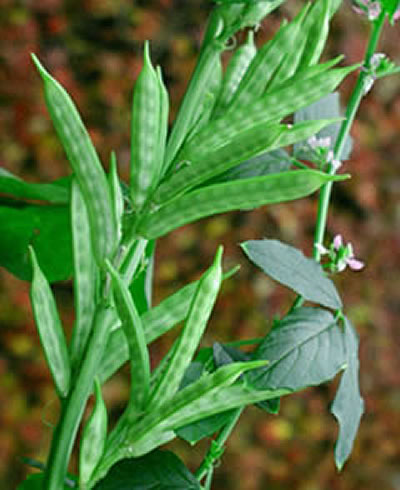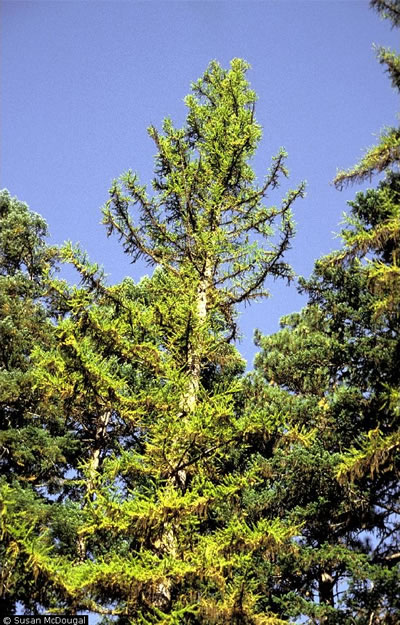Gums
Natural gums are long chains of sugars (polysaccharides) within native plant materials that are either water-soluble or capable of absorbing water. Gels are formed when these polysaccharides are mixed with water.
Gums are only partially digested by humans and typically have few adverse side effects. They are widely used in the food industry for thickening agents, emulsifiers, and stablizers. Because they are considered inert substances, they are also used in diet products and medicines. Gums are also used for the following:
- Disperse fat and proteins in dairy products.
- Prevent formation of ice crystals in frozen products.
- Improve the feel of food in the mouth.
- Provide thick and rich consistency in syrups and sauces.
- Preven solid particals from settling out of suspensions.
- Aid in moisture retention in bakery products.
Guar gum is extracted from the seeds of Cyamopsis tetragonolobus, a member of the pea family, which is known only as a cultivated plant. An African native that was domesticated in India is grown in Texas and Oklahoma. This plant, locally known as cluster bean, was originally introduced to the United States in 1903 as a cover crop for grazing, but during World War II, it became a major producer of gum for paper, textiles, and the food industry.
One example of a native North American gum producing plant is the western larch (Larix occidentalis). Gum is extracted from larch wood chips. The gum producing properties of this decidious conifer have been known for almost 100 years but it is only recently that it has been commercially exploited as a source of gum. Although larch gum has been approved for use in foods, it has not been used as such in edible products.
Fun Facts
- Wrigley’s gum gets the majority of their gum base from the southeastern pines slash pine and longleaf pine.
- Chicle gum is extracted from the sap of the sapodilla tree trunk.
- The Aztec Indians harvested and used the latex and gums produced from the sapodilla tree.
- Native Americans taught New England colonists to chew spruce sap, which became the first commercially sold chewing gum.
- Modern day chewing gum can be traced back to 11-time President of Mexico, Santa Anna.
 Guar or cluster bean, Cyamopsis tetragonolobus. Photo Wikipedia, Public Domain.
Guar or cluster bean, Cyamopsis tetragonolobus. Photo Wikipedia, Public Domain.
 Western larch (Larix occidentalis). Photo © Susan McDougall, USDA-NRCS PLANTS Database.
Western larch (Larix occidentalis). Photo © Susan McDougall, USDA-NRCS PLANTS Database.


